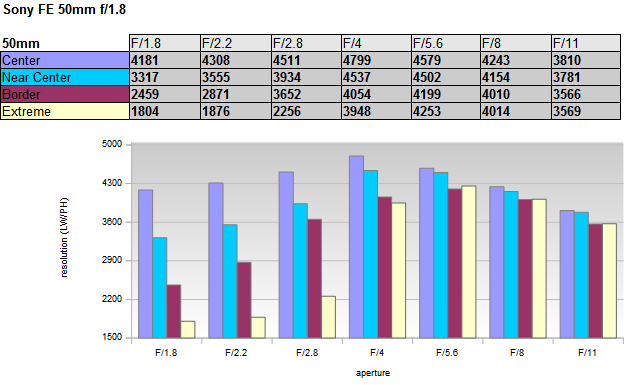David_Winston
Member
- Messages
- 14
- Reaction score
- 3
I am trying to grasp my head around certain things. One of them is diffraction, according to Cambridge in colour it is dependent of pixel pitch of the sensor,the aperture of the lens and of course the final size and viewing distance of the print. Neglecting the print size and the viewing distance and just focusing on aperture and pixel pitch. Will increased megapixels lead to sooner hitting the diffraction limit?
So if you were to jam 60 or 70 megapixels in a full frame sensor wouldn't you at one point reach diffraction very soon? I think it was some manager from Fujifilm that said, that FF's limit would be around 60mp to 100mp. Was it that that he was referring to?
I did some testing with an A7iii and an A7R iii with the same lens of a lens testing chart at various apertures (5.6 to 11). 5.6 where diffraction starts to kick in. When I downsampled the A7R iii image down (both no sharpening) I still found the A7R iii to be sharper at all apertures.
Why is that so? Is that gain in resolution outweighing the diffraction? Or is the jump from 24mp to 42mp just not that big?
Or should I have tested at smaller apertures (maybe then I would have seen the difference (I rarely use f16 so I didn't feel I should test it)?
What do you think? Will 70mp FF cameras even be useful?
So if you were to jam 60 or 70 megapixels in a full frame sensor wouldn't you at one point reach diffraction very soon? I think it was some manager from Fujifilm that said, that FF's limit would be around 60mp to 100mp. Was it that that he was referring to?
I did some testing with an A7iii and an A7R iii with the same lens of a lens testing chart at various apertures (5.6 to 11). 5.6 where diffraction starts to kick in. When I downsampled the A7R iii image down (both no sharpening) I still found the A7R iii to be sharper at all apertures.
Why is that so? Is that gain in resolution outweighing the diffraction? Or is the jump from 24mp to 42mp just not that big?
Or should I have tested at smaller apertures (maybe then I would have seen the difference (I rarely use f16 so I didn't feel I should test it)?
What do you think? Will 70mp FF cameras even be useful?











